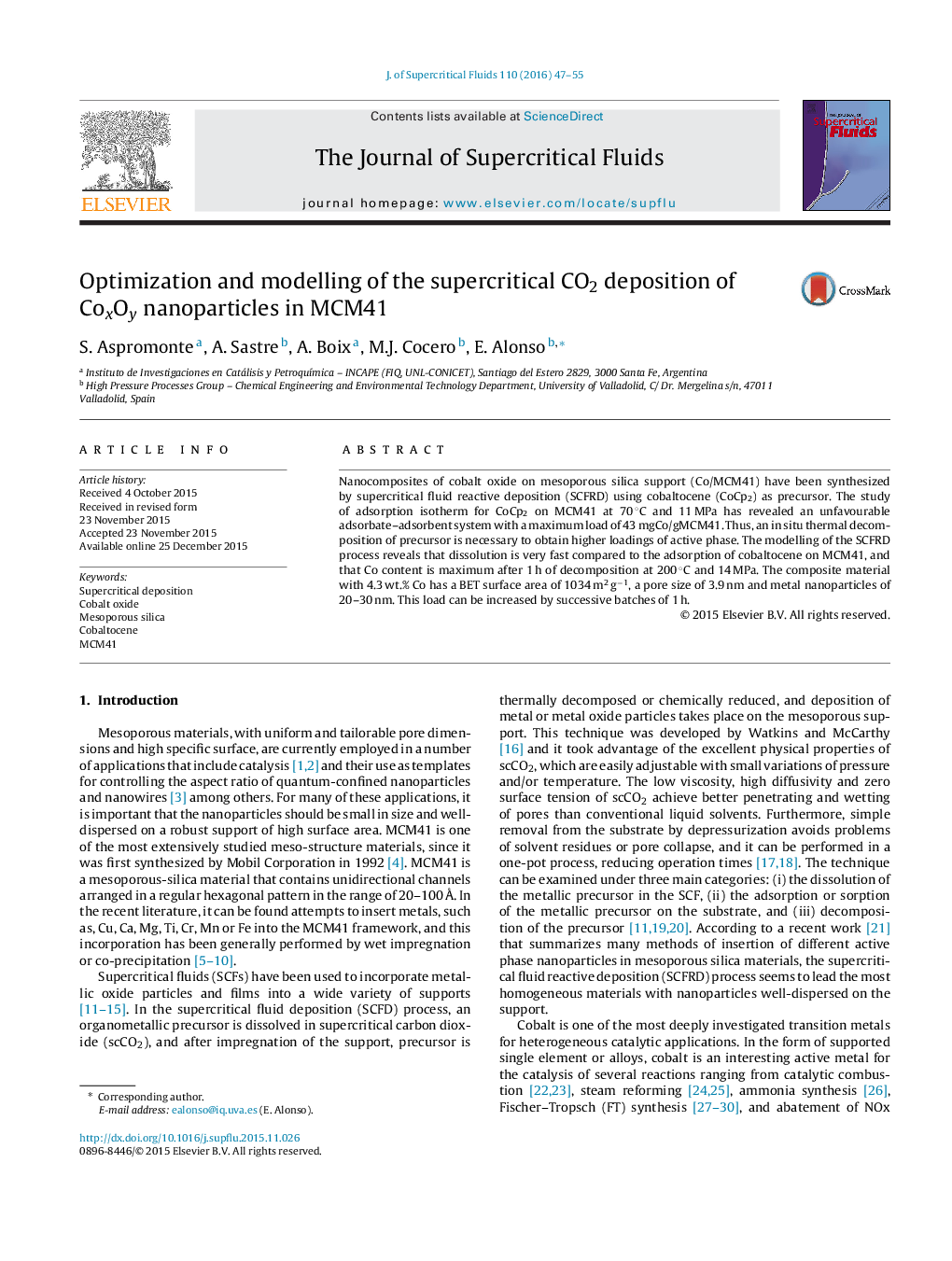| Article ID | Journal | Published Year | Pages | File Type |
|---|---|---|---|---|
| 230035 | The Journal of Supercritical Fluids | 2016 | 9 Pages |
•CoxOy/MCM41 has been synthesized by supercritical fluid reactive deposition with CO2.•The dissolution and adsorption of cobaltocene on MCM41 is very slow.•Decomposition is quicker and a temperature of 200 °C has been chosen for this step.•The material 4.3 wt.% Co has a BET area of 1034 m2 g−1 and a pore size of 3.9 nm.
Nanocomposites of cobalt oxide on mesoporous silica support (Co/MCM41) have been synthesized by supercritical fluid reactive deposition (SCFRD) using cobaltocene (CoCp2) as precursor. The study of adsorption isotherm for CoCp2 on MCM41 at 70 °C and 11 MPa has revealed an unfavourable adsorbate–adsorbent system with a maximum load of 43 mgCo/gMCM41. Thus, an in situ thermal decomposition of precursor is necessary to obtain higher loadings of active phase. The modelling of the SCFRD process reveals that dissolution is very fast compared to the adsorption of cobaltocene on MCM41, and that Co content is maximum after 1 h of decomposition at 200 °C and 14 MPa. The composite material with 4.3 wt.% Co has a BET surface area of 1034 m2 g−1, a pore size of 3.9 nm and metal nanoparticles of 20–30 nm. This load can be increased by successive batches of 1 h.
Graphical abstractFigure optionsDownload full-size imageDownload as PowerPoint slide
